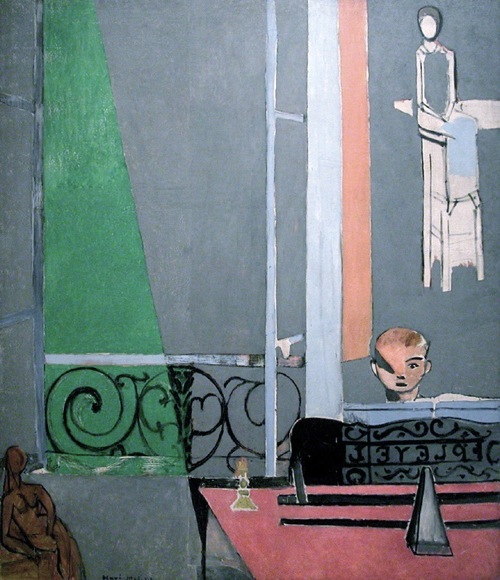This is a seriously impressive exhibition. The full title is ‘From Russia: French and Russian Master Paintings 1870-1925 from Moscow and St Petersburg‘. It starts with a little room of Russian paintings from the start of that period; then you get a whole load of French paintings that were collected by two Russian art collectors, Ivan Morozov and Sergei Shchukin, and are now divided between various Russian state museums; then the rest of the show is of Russian paintings again, which are more or less heavily influenced by the French work.
The French section includes major works by most of the biggest names in French art — Renoir, Monet, Cézanne, Van Gogh, Gauguin, Matisse, Picasso, Rousseau, Bonnard — whereas with a couple of major exceptions in Chagall and Kandinsky the Russian artists are less familiar. It makes for a good combination; the French artists are immediately enjoyable while the Russians, simply because they are less familiar, require a bit more evaluation.
My favourite painting was probably Matisse’s Harmony in Red:

Apparently, when the collector bought it at a Paris show, it was all blue instead of red, but Matisse asked to hang on to it for a few weeks because he wanted to tweak it. It must have been a bit of a shock to open it up and find it had completely changed colour.
Of the Russians: there were lots I quite liked including, unusually for me, the two Chagalls. Among the people I was with the most popular choice for a painting to take home would be Altman’s portrait of Anna Akhmatova. I think I’d probably take one of the three Malevich paintings called Black Square, Black Circle and Black Cross which are just black shapes on white backgrounds. That kind of geometrical minimalism is a bit mysterious: sometimes it works and sometimes it doesn’t. Those ones worked, for me, though I’d be hard pressed to explain why.
This exhibition has an obvious relevance to the whole modernism and politics discussion, since Russia went through an immensely creative period in art and architecture for the first two decades of the C20th, and for a while after the revolution this radical art was embraced by the party; but then the regime ruthlessly crushed it. Artists may have supported radical politics, but politicians didn’t necessarily support radical art. A dislike of ‘decadent’ art was one of the things Hitler and Stalin had in common.


